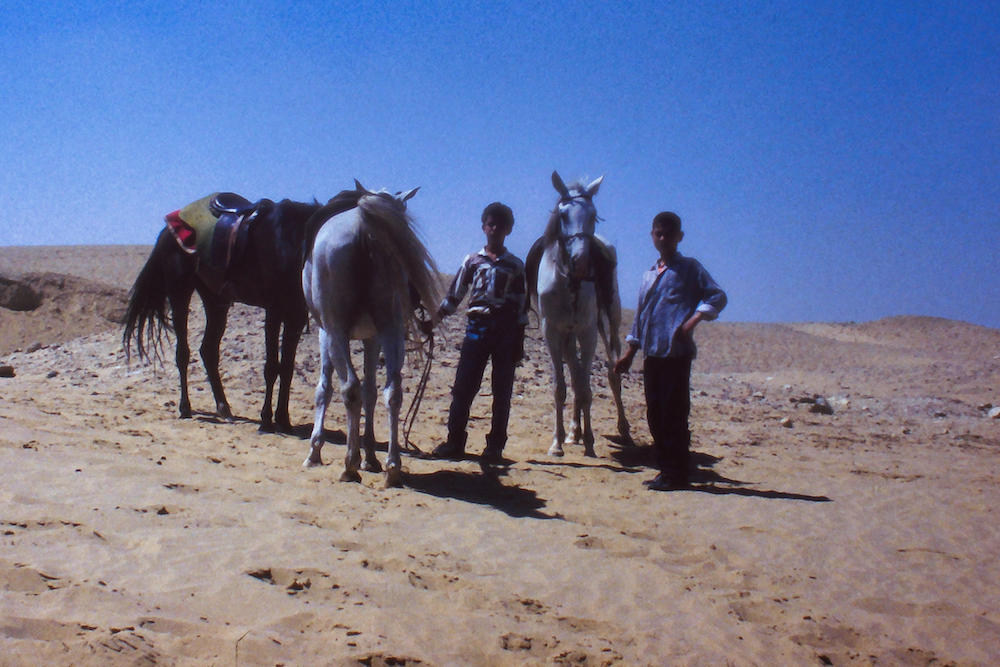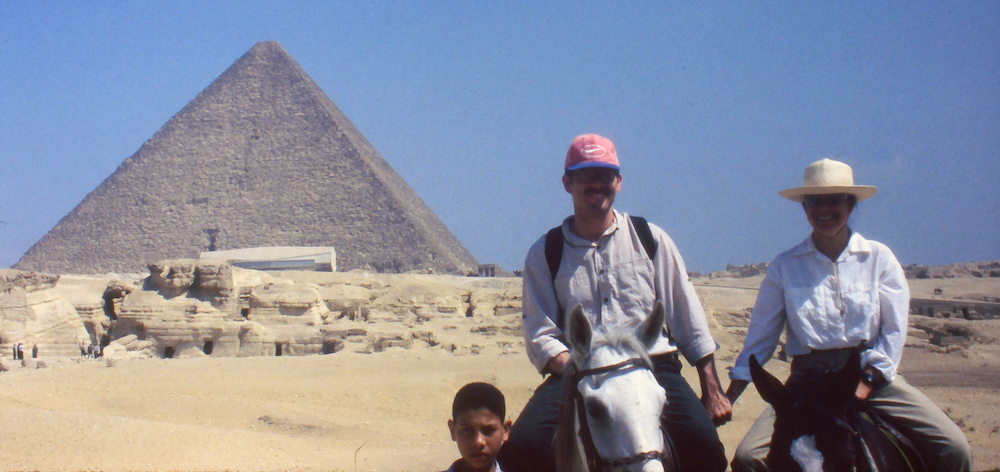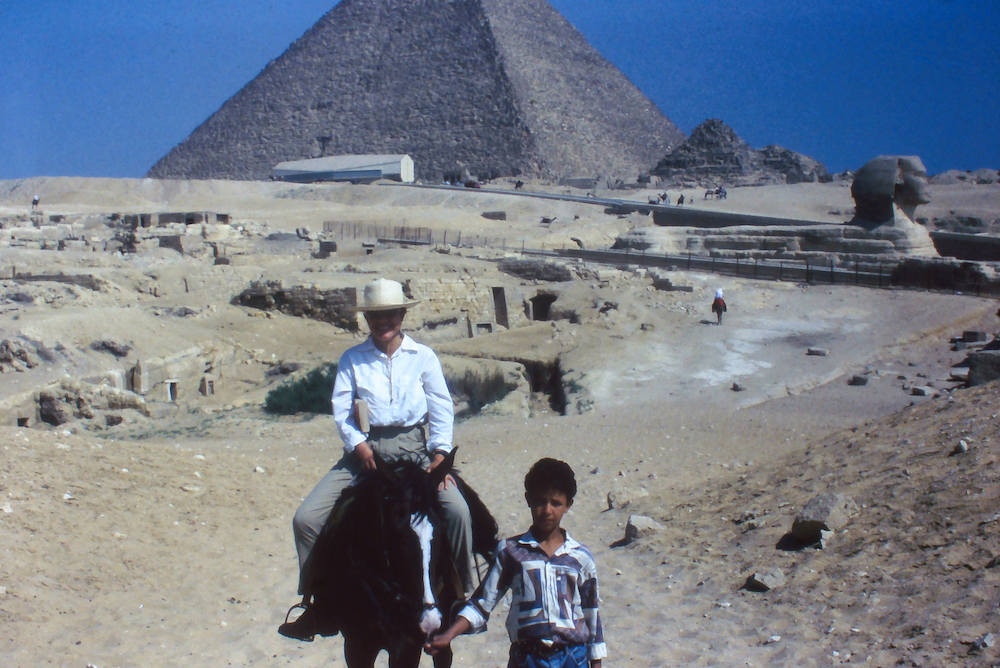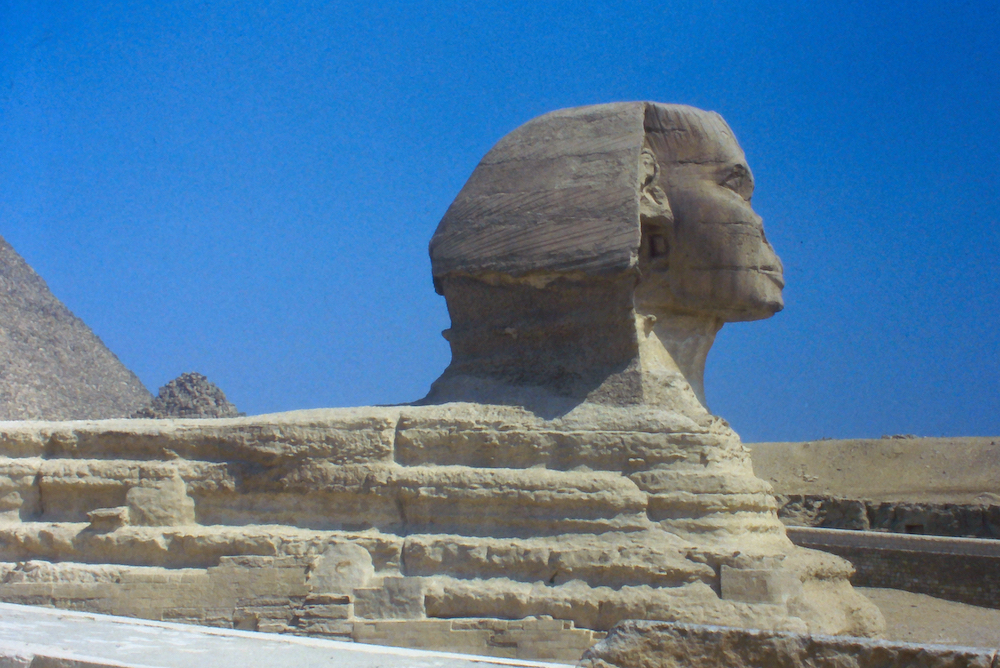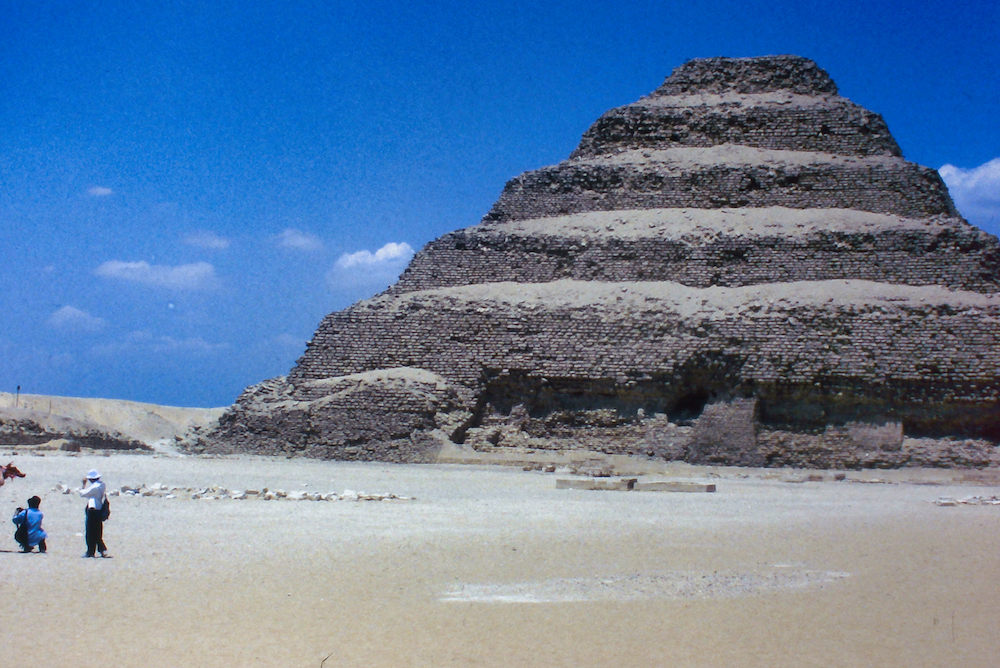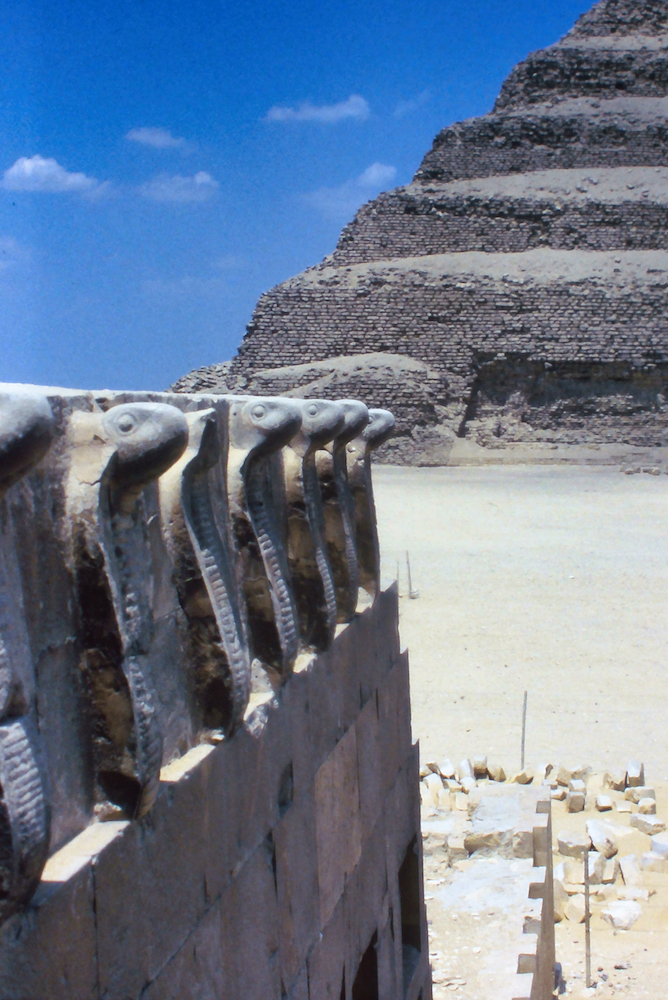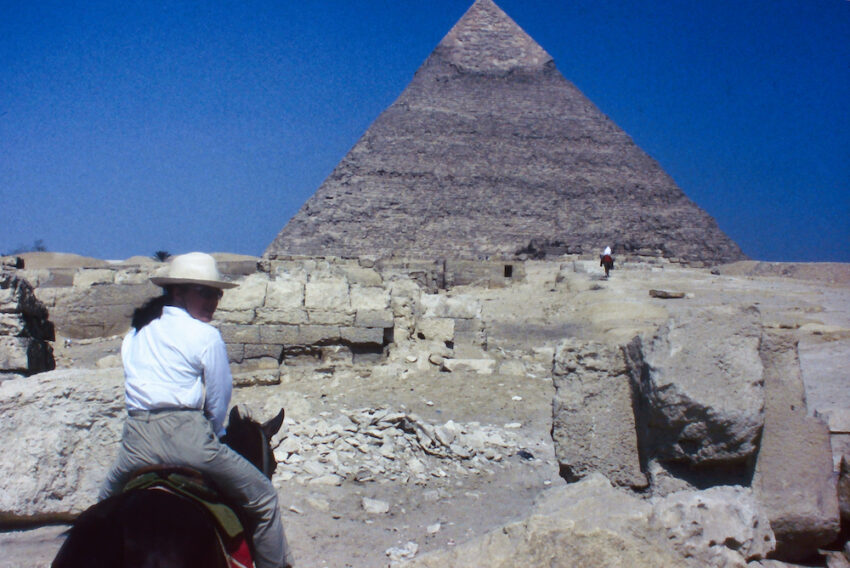5/13/98: Nick set us up with a taxi drive/tour guide named Hamdi who picked us up at 9am to see the pyramids.
5/13/23: Our first stop was the pyramid complex at Giza. Those are the ones on all the postcards, and in all of the history textbooks and encyclopedia that I grew up with. Most notably, there is the Great Pyramid of Khufu, which is believed to have originally been capped with pure gold. If my memory serves, I think my older sister, Shannon, made a diorama of these three pyramids out of sugar cubes when we were in 3rd or 4th grade. While she was building her pyramids, I kept filching the sugar cubes to suck on.
When we were at Giza in 1998, we were startled to find that the photos in our childhood textbooks with endless rolling sand dunes and cloudless blue skies severed by the piercing angles of the pyramids hadn’t told the whole story. The Cairo city limits had begun to encroach on the archeological site at Giza, with only a couple of hundred yards of asphalt parking lot separating the nearest apartment block from the giant stone Sphinx that guarded the ancient structures. Of course, we could still compose our photos by pointing our cameras to the west or even to the south to get a sense of that endless expanse of dessert behind the massive presence of the pyramids and the Sphinx, but there was suburban sprawl right behind us. Sadly, the, Google maps satellite view of the site today reveals that the sprawl has now almost completely encircled the complex at Giza!
Well, Hamdi, our taxi driver, had given us some pro tips on bargaining with touts before we arrived, so we managed a good price for a tour of the complex on horse-back. A very touristy thing to do, and not really necessary to get from the parking lot to the pyramids, but it made for memorable photos.
After Giza we also visited the pyramid at Saqqara. It was a somewhat smaller structure than the Great Pyramid at Giza, but was also more accessible to visitors, so we actually got to climb into some of the tunnels and chambers. The tunnels were so narrow that they induced claustrophobia, while the chambers were enormous, and it all smelled 5,000 years old! We also visited Dashur, where there is quite an elaborate complex that surround a step pyramid and the Mastaba of Ti, which was spectacular. The ancient reliefs on the walls were still in perfect condition, if only a little faded.
The Great Pyramid at Giza, along with the Sphinx, are considered one of the “Seven Wonders of The Ancient World,” and it is easy to see why. Scientists, architects and plain normal people throughout millennia have puzzled over just how these colossal (!) structures could have been built with the technology available at the time. But it is also rather dumbfounding to think about the fact that these gigantic structures were built as burial sites/monuments, rather than as living buildings that had some sort of utilitarian purpose. The buildings are staggering to behold, but the resources expended — from taxed revenue to years of construction to slave laborers — even more so. And instead of being used for many people, they were built to honor individuals. I suppose the goal of inspiring awe and being remembered was accomplished by Khufu the Pharoah, and the other kings and queens of the Nile. But, while I am one who has stood their slack-jawed, I also am left with a sense of the vanity of vanities. Should I be thinking “So beautiful!” or “So what?”
